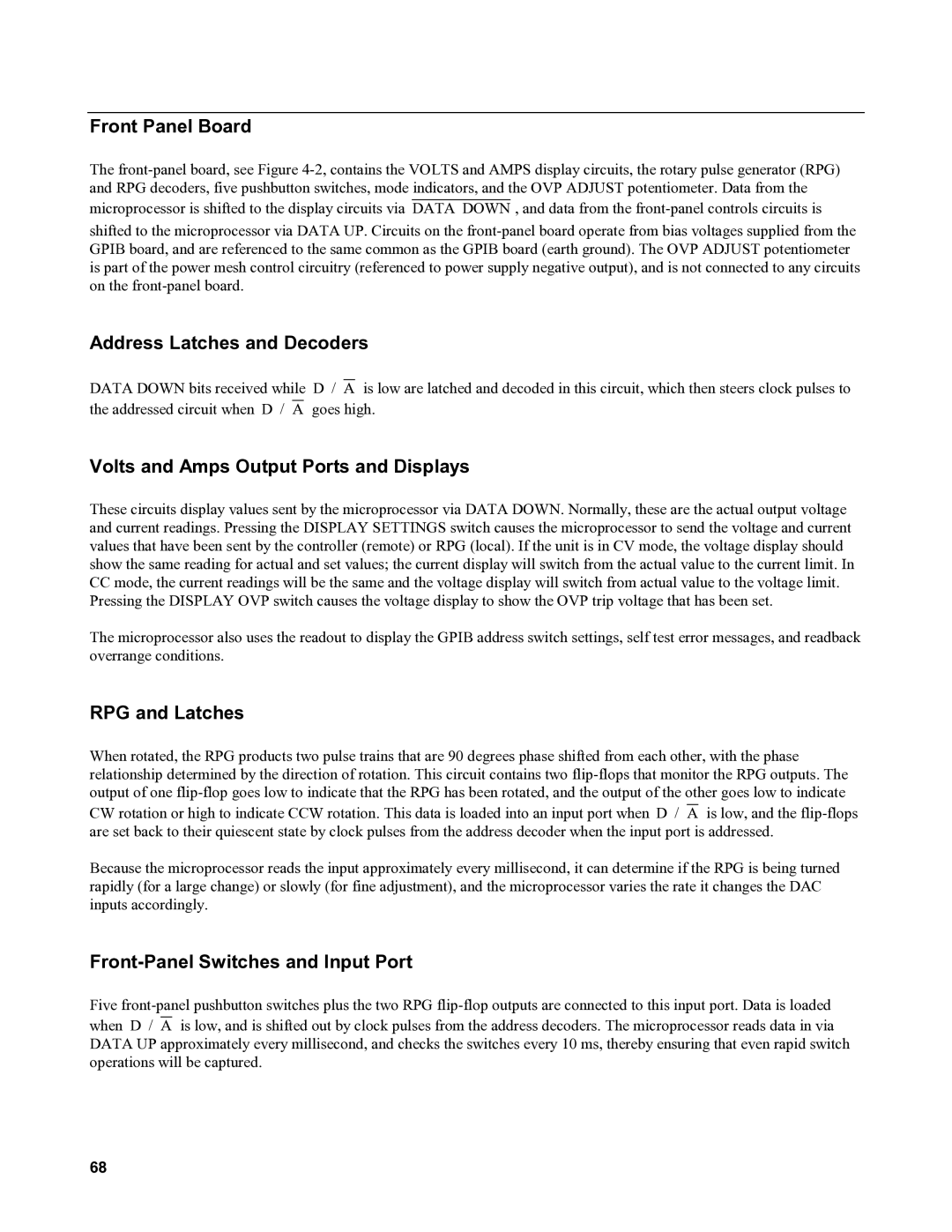
Front Panel Board
The
microprocessor is shifted to the display circuits via DATA DOWN , and data from the
shifted to the microprocessor via DATA UP. Circuits on the
Address Latches and Decoders
DATA DOWN bits received while D / A is low are latched and decoded in this circuit, which then steers clock pulses to the addressed circuit when D / A goes high.
Volts and Amps Output Ports and Displays
These circuits display values sent by the microprocessor via DATA DOWN. Normally, these are the actual output voltage and current readings. Pressing the DISPLAY SETTINGS switch causes the microprocessor to send the voltage and current values that have been sent by the controller (remote) or RPG (local). If the unit is in CV mode, the voltage display should show the same reading for actual and set values; the current display will switch from the actual value to the current limit. In
CCmode, the current readings will be the same and the voltage display will switch from actual value to the voltage limit. Pressing the DISPLAY OVP switch causes the voltage display to show the OVP trip voltage that has been set.
The microprocessor also uses the readout to display the GPIB address switch settings, self test error messages, and readback overrange conditions.
RPG and Latches
When rotated, the RPG products two pulse trains that are 90 degrees phase shifted from each other, with the phase relationship determined by the direction of rotation. This circuit contains two
CW rotation or high to indicate CCW rotation. This data is loaded into an input port when D / A is low, and the
Because the microprocessor reads the input approximately every millisecond, it can determine if the RPG is being turned rapidly (for a large change) or slowly (for fine adjustment), and the microprocessor varies the rate it changes the DAC inputs accordingly.
Front-Panel Switches and Input Port
Five
when D / A is low, and is shifted out by clock pulses from the address decoders. The microprocessor reads data in via DATA UP approximately every millisecond, and checks the switches every 10 ms, thereby ensuring that even rapid switch operations will be captured.
68
